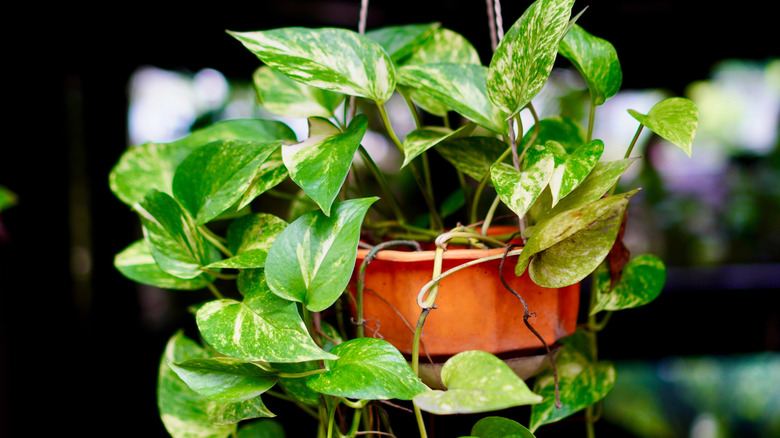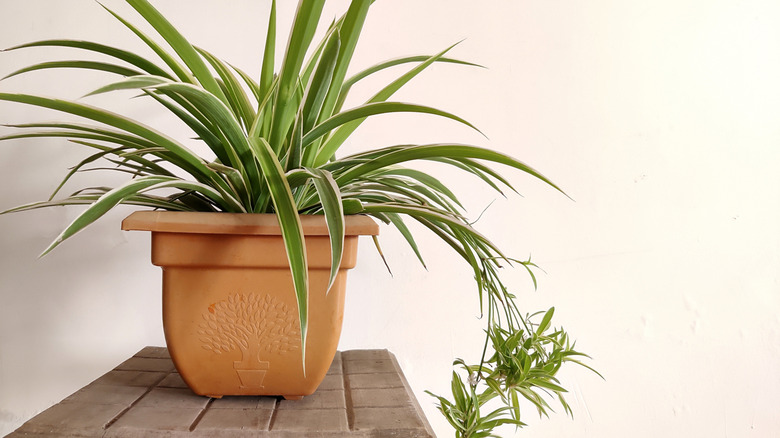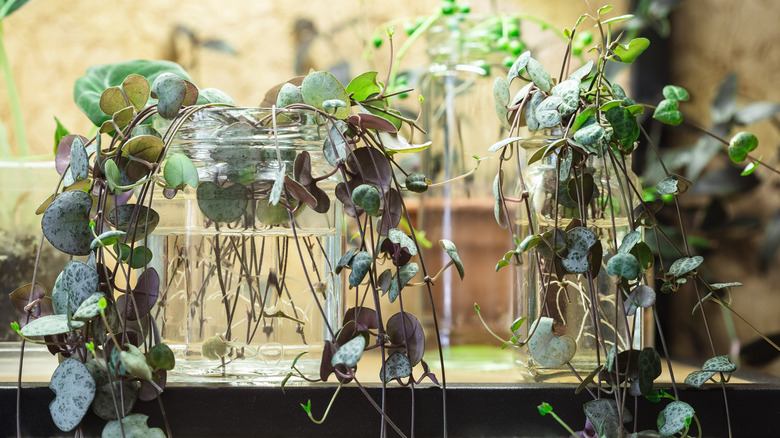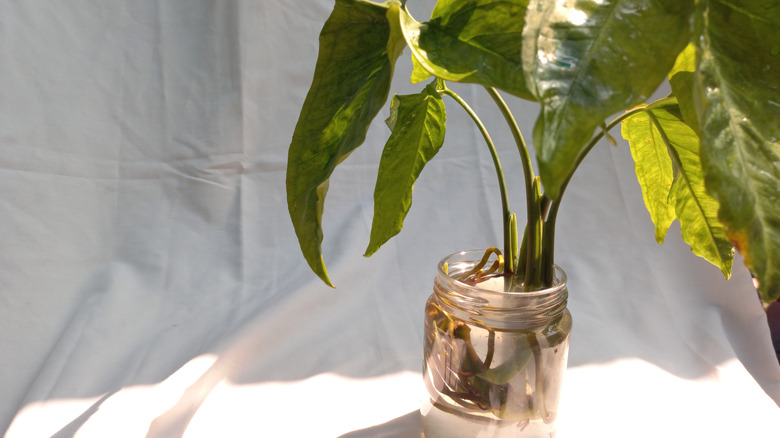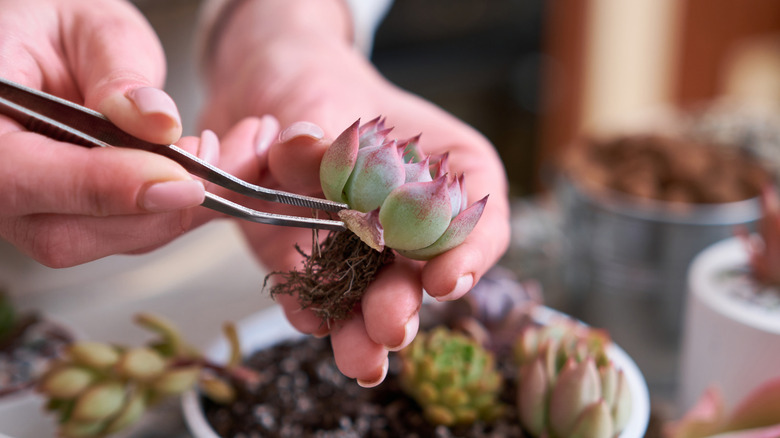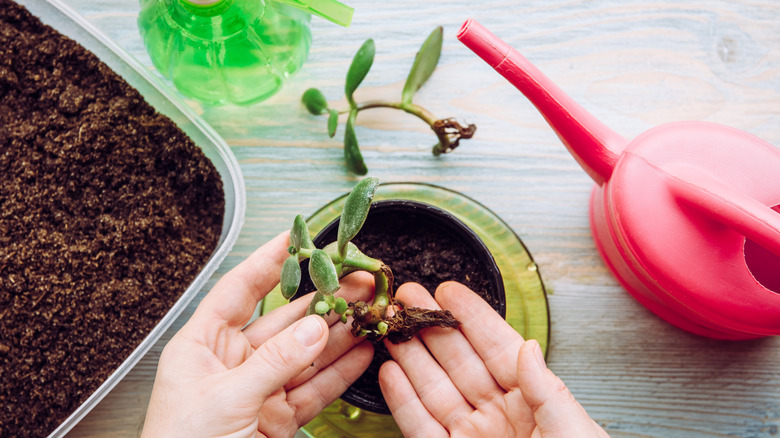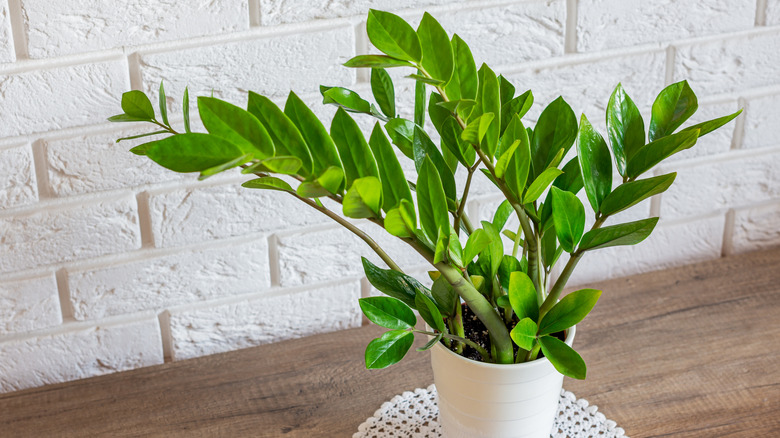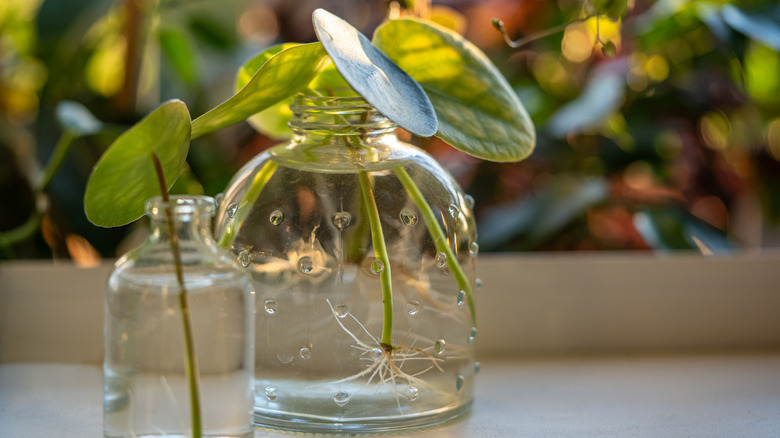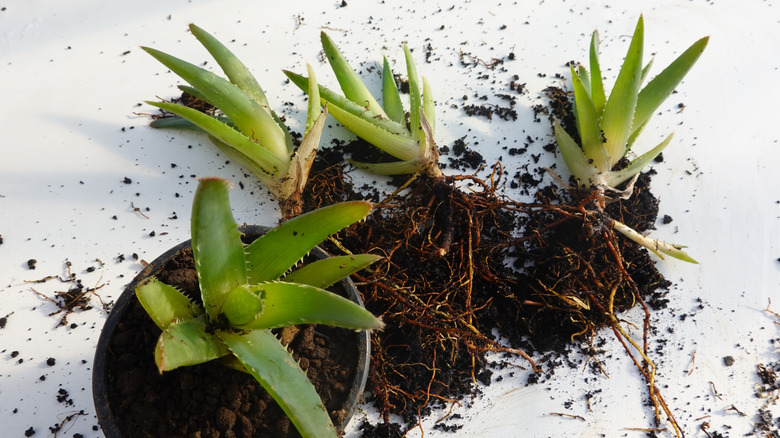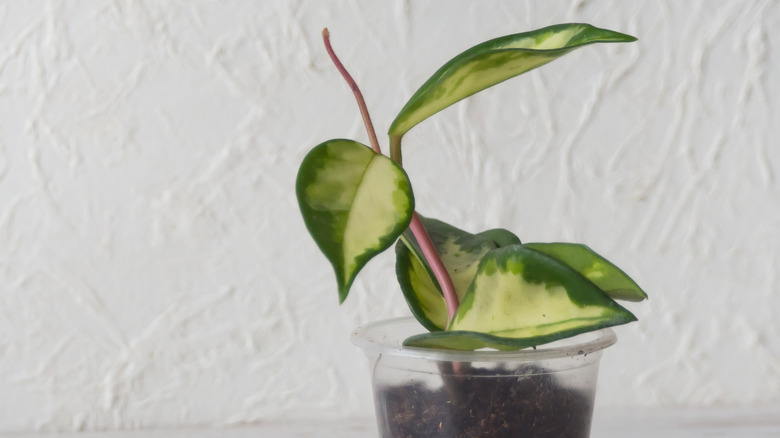12 Easiest Houseplants To Propagate To Fill Your Home With Free Greenery Year-Round
Ever wish you could make your home look like a lush, green oasis without blowing your budget on new houseplants every month? Consider propagating some of your existing plants to multiply the foliage in your space. You don't need to be a master gardener or spend a fortune to turn your home into a jungle. Many of your favorite houseplants, like pothos, snake plants, and succulents, are surprisingly easy to propagate, giving you endless amounts of greenery for free.
To propagate plants like a pro, you'll need pruning shears or gardening scissors, nursery pots, some compost-based soil mix, and, in some cases, jars of water. The way you go about propagating plants depends on the species you're working with. For those without stems, like snake plants or succulents, you'll just want to cut off an entire leaf to start your new plant. Depending on the plant, this can be done in water or soil.
With plants that have stems, like a pothos, you'll need to identify nodes. These are the sections of the stems from which leaves grow. Clip stems right below a node and remove the leaves, except for the top two or three. Place your cutting into a glass of water, submerging some of these lower nodes, and change the water whenever it gets murky. Over time, roots will develop, and you'll be able to plant your cutting into a pot filled with soil mix. In some cases, you can skip the water step, although it is a great way to monitor the roots' growth and make sure your cutting is evolving as it should before transferring into soil.
Pothos
If you're a beginner gardener looking for your first propagation project, look no further than the pothos (Epipremnum aureum). This is a low-maintenance plant that's one of the easiest to cut and propagate. Known for its long trailing stems and bright green leaves, it's an adaptable plant that can even thrive in water full-time. That way, you can skip the repotting step if you'd like. To propagate a pothos to get endless greenery in your home, just snip a healthy section of stem at least four inches long, making sure to cut right below a node, and place it in water.
Spider plant
Spider plants (Chlorophytum comosum) are adaptable, which makes them easier to propagate, especially for beginners. Spider plants are known for their long and skinny leaves that make them look like spiders, and smaller leaf clusters that they send dangling below them. These clusters are called spiderettes, and that's what you'll use to propagate spider plants the right way. Just snip off one of the smaller spiderettes, place it in a glass full of water, and leave it somewhere with indirect sunlight. Once the roots have grown to be a few inches, transfer this baby into some soil and watch it thrive
Snake plant
There are several ways to propagate a snake plant (Dracaena trifasciata), but the simplest approach is to cut an entire leaf off near the bottom and plop it in water until roots start to form. One of the reasons why snake plants (which you might know as mother-in-law's tongue) are so great to propagate is because of how resilient they are, despite always looking lush and healthy. There are very few ways to kill one of these, so the stakes are low when it comes to propagating.
String of hearts
String of hearts plants (Ceropegia woodii) are great to propagate because they have so many long, vine-like stems. Because these have such long stems, cutting off a few inches to attempt propagation comes at barely any cost to the parent plant. Just cut off three inches or more from one of the stems, remove the leaves from the bottom of the cutting (whatever will go in water), and place it in a cup. After a few weeks, roots will begin to grow from the submerged nodes, and you can transfer the cutting into soil.
Arrowhead plant
Arrowhead plant (Syngonium podophyllum), or arrowhead vine, is another one of these cool plants that give a bounty of leaves and stems to work with. These have large, arrowhead-shaped leaves growing out from long, thin stems. To propagate your arrowhead plant, cut off an entire stem close to the soil. If more than one leaf is growing from that stem, remove some of the weaker ones to keep one or two strong leaves only (don't worry, the new plant will grow new leaves in no time). Place the cutting in a jar of water until roots grow, and transfer it into soil.
Philodendron
Philodendron plants are wonderful candidates for propagation because they give you plenty of stems and nodes to create new cuttings from. In some cases, aerial roots might already be growing from some of the nodes, which gives you a head start. Just cut a stem off right underneath a node, about five inches long. Remove extra leaves that are growing close to the bottom node and keep a couple at the top. Place the cut-off stem in water, submerging the bottom node completely, and wait for roots to grow. Then, transfer it into soil; it's that easy.
Echeveria
Propagation is not synonymous with leafy plants; in fact, it works wonders with succulents. A great one to try is the echeveria, a succulent that grows leaves around a center, a bit like a traditional flower. To propagate this cool succulent, remove a leaf from the parent plant's exterior using scissors and let it dry for a few days. Once the bottom has scarred over and is hard, place it flat on some soil and watch it grow.
Jade plant
Jade plants (Crassula ovata) are a type of succulent that grows upwards, resembling a tree. It has dark green, fleshy leaves that grow from a few central stems. To propagate a jade plant, just pluck one of its plumpest leaves from the top. Leave the leaf to dry for a few days, and then place it horizontally on top of the soil mix in a small pot. Keep the water moist, and after a few weeks, you should start to see some roots coming out of the leaf.
ZZ plant
ZZ plants (Zamioculcas zamiifolia) are a great choice for propagation. These are leafy beauties with long stalks that grow upwards. They're a crowd favorite among houseplants because they're adaptable and can thrive in many conditions. To propagate a ZZ plant, you just need to cut off an entire stalk from the plant near the soil. An important step here is to let the cut end of the stalk dry and scar over for a few hours before placing it in a cup of water. Once the cutting has developed roots, transfer it into some soil to create your new plant.
Chinese money plant
Chinese money plants (Pilea peperomioides) look delicate, but they're actually really easy to care for. They have several stems that sprout from a central stalk, which end with a round and flat leaf. These grow quickly, which makes them really fun to propagate. Pluck a large leaf from the parent plant with its stem, including the bit that attaches to the main stalk. To do this, use a knife to try to detach it gently from the parent plant. As with other plants, place the cutting in water until roots develop and move it to soil.
Aloe Vera
Aloe vera is a succulent that's a great investment because it produces many offshoots to repot. But, instead of cutting a leaf from the parent plant, wait for it to give you a small plant to repot (also called a pup). These will grow near the bottom of the plant, in the soil. They already have their own roots, so you can pluck them directly from the soil and replant them as is. If you inadvertently damage the roots in the process, no worries, you can place these pups into water to create new roots.
Hoya
Hoya plants, also known as wax plants or porcelain flowers, are a great choice for beginner gardeners trying to learn how to propagate cuttings. Just cut a stem with a few leaves on it, about four inches long. As always, remove leaves at the bottom of the stem and only keep the ones at the top. Place the stem in water to grow some roots, and transfer it into potting mix once they're a few inches long. Soon enough, you'll have a brand new wax plant.

